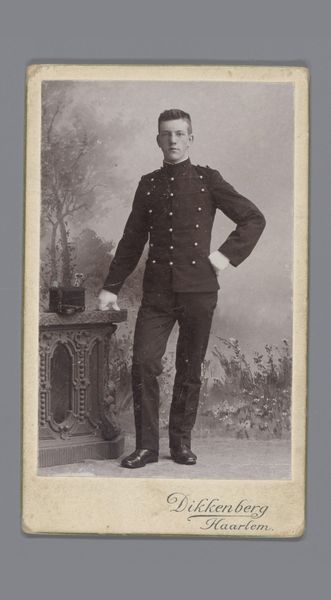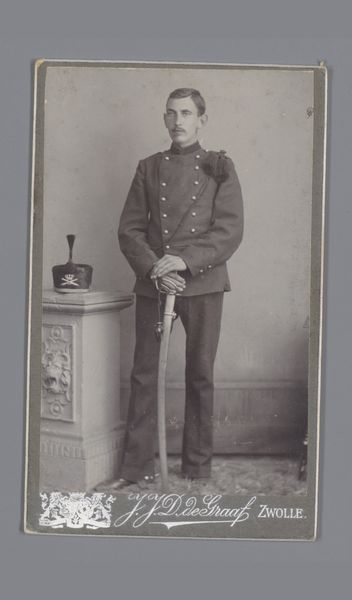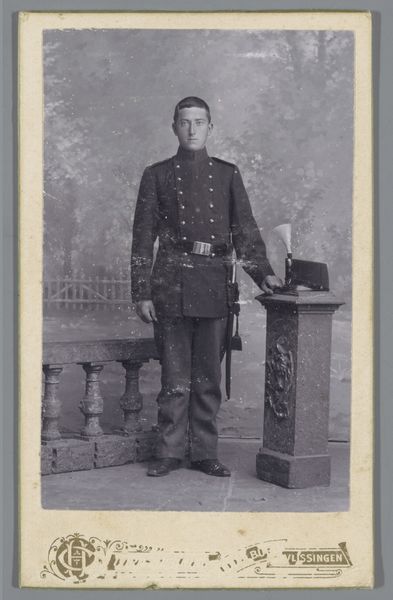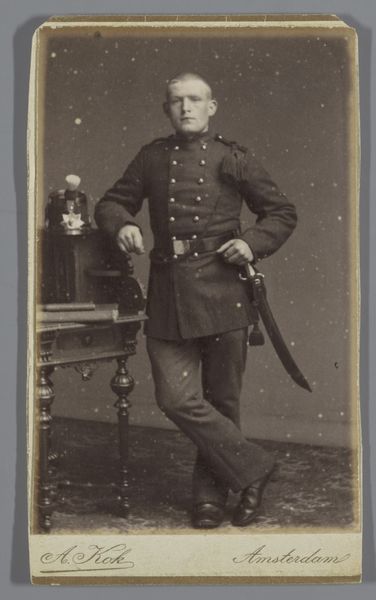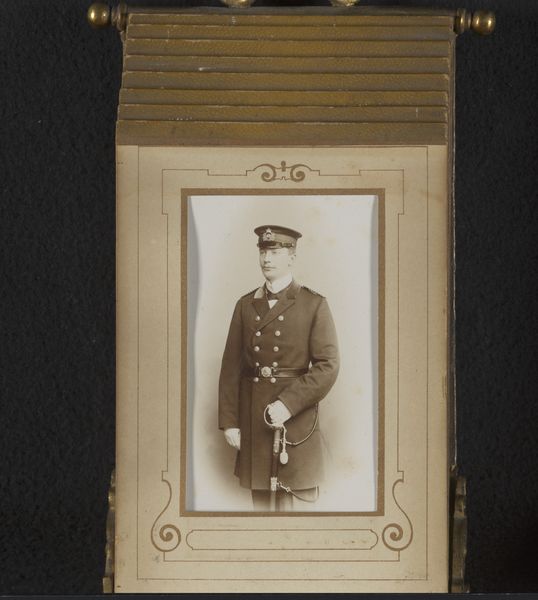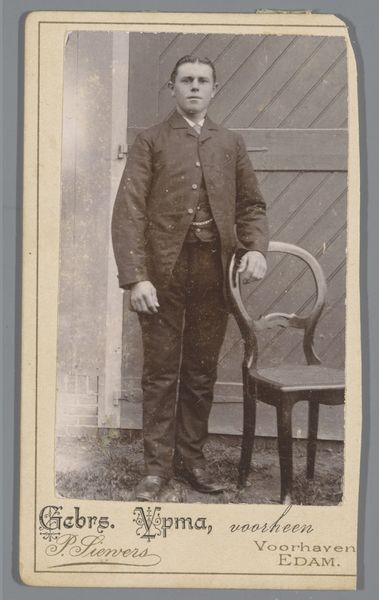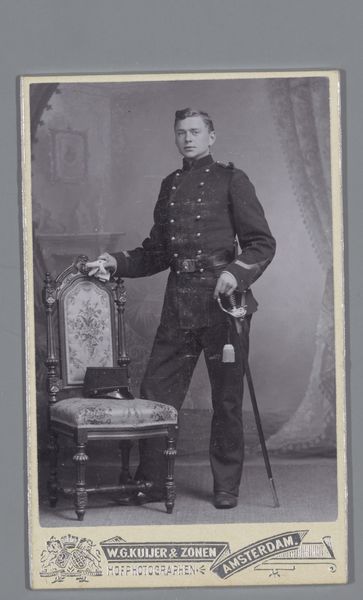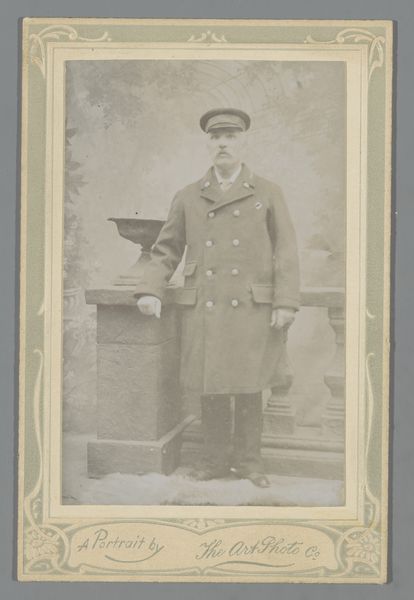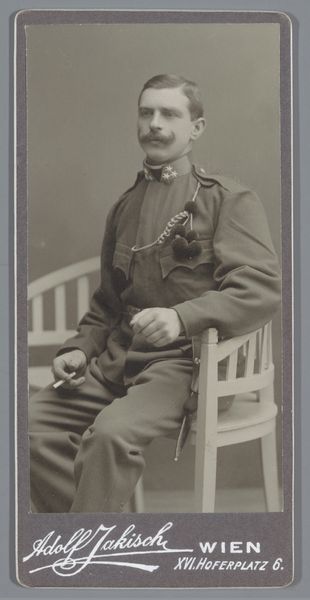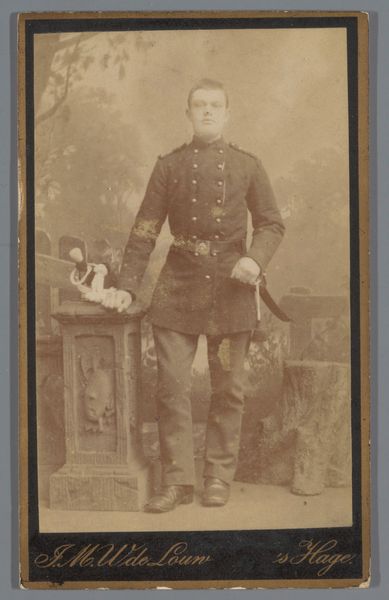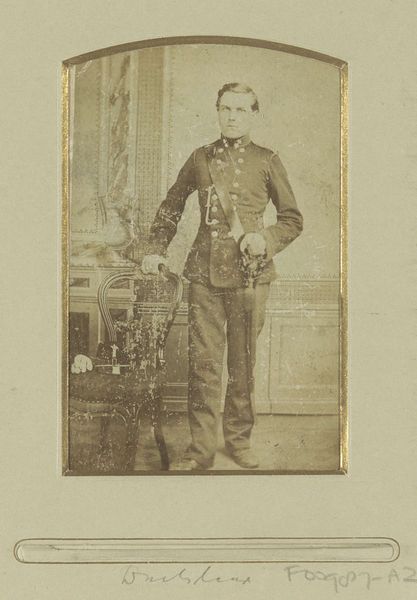
photography
#
portrait
#
photography
#
historical photography
#
historical fashion
#
genre-painting
Dimensions: height 106 mm, width 65 mm
Copyright: Rijks Museum: Open Domain
Editor: This is a photograph from between 1903 and 1920, entitled *Portret van een onbekende jongeman in uniform*, or *Portrait of an unknown young man in uniform*, taken by Jan van Roon. The sepia tones give it a certain gravity. What layers do you see beneath the surface? Curator: Indeed. The uniform itself is rich with cultural data. Think about its purpose – to signal belonging, authority, and often, sacrifice. What does the subject, this anonymous soldier, believe he represents through this garment? Does he see glory, duty, or simply a role he must fulfill? His rigid posture suggests a conformity to expectation, a visual submission to the collective. Editor: He does seem quite stiff, almost burdened. I wonder what "story" this portrait has in the present day? Curator: Look at the setting too – the plain backdrop, the posed stance. These were conscious choices. The photographer captured not just an individual, but also an ideal, a symbolic representation of military service. It's the early 20th century and what did serving the state and armed conflict look like at the time? Do we associate it more readily with heroism and hope? Editor: So the photo's power comes not just from what is visible, but also from what it communicates about values and collective memory? Curator: Precisely. The photograph captures a moment, but it also acts as a vessel, carrying with it a freight of cultural meaning that resonates through the years. Its impact derives from shared assumptions, aspirations, fears. The 'unknown' subject also allows people to project a variety of narratives to construct and maintain meaning over time. Editor: I didn't consider all those symbolic meanings embedded within it. It has given me new questions. Curator: It makes me ponder about visual traditions, cultural meanings, and continuities of state violence and their manifestations across generations.
Comments
No comments
Be the first to comment and join the conversation on the ultimate creative platform.

